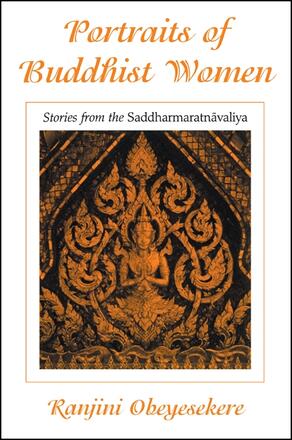
Portraits of Buddhist Women
Stories from the Saddharmaratnāvaliya
Alternative formats available from:
A collection of stories about women from the thirteenth-century Buddhist work that reveals much about women's status in their society and within Buddhism.
Description
A fascinating collection about Buddhist women translated from the thirteenth-century Sinhala Buddhist text, the Saddharmaratnāvaliya, these stories provide insights into the social status and roles of women in medieval India and Sri Lanka and the Buddhist doctrinal ideal. They also reflect the changes that took place as the Buddhist position on gender and female sexuality accommodated the social realities of the time. Translating, contextualizing, and commenting on the narratives, Ranjini Obeyesekere highlights the differences in perspective between the celibate monks who were the literary authors of the Saddharmaratnāvaliya and the social world of their audience.
Ranjini Obeyesekere is Lecturer in the Department of Anthropology at Princeton University. She is the author and editor of several books, including Sri Lankan Theater in a Time of Terror: Political Satire in a Permitted Space.
Reviews
"This is an interesting translation of a work that is well known and loved by Sri Lankan Buddhists. They have seen it as one of the best expressions of what Buddhism means. It is good to have a translation of some of the key stories from this text so that students of Buddhism can have access to them to go with the more familiar doctrinal and ethical texts. The stories provide a richer context for understanding what the doctrines and ethics meant in classical Buddhist culture. " — George Bond, Northwestern University
"The translated stories are fascinating and rich. The interpretations offered are refreshing. " — Paula K. R. Arai, Vanderbilt University
"Anyone who likes to read engaging stories, especially those with a moral, will enjoy reading the book. " — Donald K. Swearer, coauthor of The Legend of Queen Cama: Bodhiramsi's Camadevivamsa, a Translation and Commentary